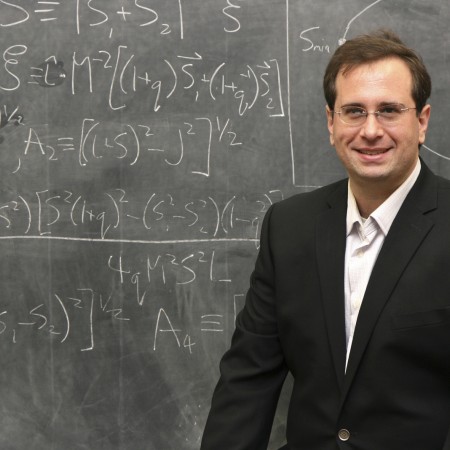Ph.D. - Physics
California Institute of Technology - 2005

Professional Preparation
B. A. - Physics
Princeton University - 2000
Princeton University - 2000
Certificate - Applied and Computational Mathematics
Princeton University - 2000
Princeton University - 2000
Research Areas
Binary-Black-Hole Mergers
Black holes are compact objects predicted by Einstein's theory of general relativity whose gravity is so intense that they possess event horizons. I am interested in using astrophysical observations to predict where and how often these black holes merge with each other and using tools of general relativity such as post-Newtonian expansions, numerical-relativity simulations, and black-hole perturbation theory to calculate the electromagnetic signatures and gravitational waves produced in such mergers.Tidal Disruption Events
Stars that wander too close to supermassive black holes will be disrupted when the black hole's gravitational tidal field overwhelms the star's self-gravity. Some of the debris from the tidally disrupted star will be accreted by the black hole, powering a bright electromagnetic flare that can be observed in X-rays, ultraviolet radiation, and optical light. Relativistic effects may strongly affect both the rate and light curves of tidal disruption events. I am interested in calculating these relativistic corrections in time for upcoming optical and X-ray surveys like LSST, Gaia, WFIRST-AFTA, and eROSITA.Publications
Distribution of orbital inclinations for tidal disruption events by Kerr black holes - Other
Distribution of orbital inclinations for tidal disruption events by Kerr black holes 2024 - Journal Article
Detectability of strongly lensed gravitational waves using model-independent image parameters 2023 - Journal Article
Constraining black-hole binary spin precession and nutation with sequential prior conditioning 2022 - Journal Article
Pathways for producing binary black holes with large misaligned spins in the isolated formation channel 2021 - Journal Article
Awards
Provost's Award for Excellence in Faculty Mentoring - University of Texas at Dallas [2024]
Outstanding Referee Award - American Physical Society [2019]
Sloan Research Fellowship - Sloan Foundation [2015]
Topical Group in Gravitation Eary Career Lecture - American Physical Society [2013]
NASA Graduate Student Fellowship - NASA [2003]
NSF Graduate Fellowship - NSF [2000]
Appointments
Professor
University of Texas at Dallas [2024–Present]
University of Texas at Dallas [2024–Present]
Associate Professor
University of Texas at Dallas [2019–2024]
University of Texas at Dallas [2019–2024]
Assistant Professor
University of Texas at Dallas [2013–2019]
University of Texas at Dallas [2013–2019]
Postdoctoral Fellow
New York University [2010–2013]
New York University [2010–2013]
Postdoctoral Scholar
California Institute of Technology [2008–2010]
California Institute of Technology [2008–2010]
Postdoctoral Fellow
University of Toronto [2005–2008]
University of Toronto [2005–2008]
News Articles
New insight found in black hole collisions
New research by an astrophysicist at The University of Texas at Dallas provides revelations about the most energetic event in the universe -- the merging of two spinning, orbiting black holes into a much larger black hole.Could primordial black holes be dark matter?
“There are a number of different theories about what dark matter could be, but we think one alternative might be very small primordial black holes.”No Extra Gravity for Dark Matter
Darth Vader might be disappointed to hear it, but the force of gravity does not have a dark side. Dark matter does not pull on other dark matter with any extra gravity or additional forceScientists Study the Physics Behind Massive Black Hole Collisions
One of the most powerful events in the universe occurs when two black holes collide. Now, scientists have taken a closer look at this event and have learned a bit more about what happens when two orbiting black holes become one.Researchers Are Putting a Multidisciplinary Spin on Teaching Physics
UT Dallas researchers are launching a three-year research project that uses specialized computer programs to teach children physics, thanks to a recent grant of more than $1 million from the National Science Foundation’s STEM + Computing (STEM+C) program.The study, Scaffolded Training Environment for Physics Programming (STEPP), will test a novel approach for teaching physics to high school students — computer-based learning programs that require no prior coding experience.
Affiliations
American Astronomical Society
2001/08High Energy Astrophysics Division
American Physical Society
2012/04Division of Astrophysics, Division of Gravitation, Texas Section